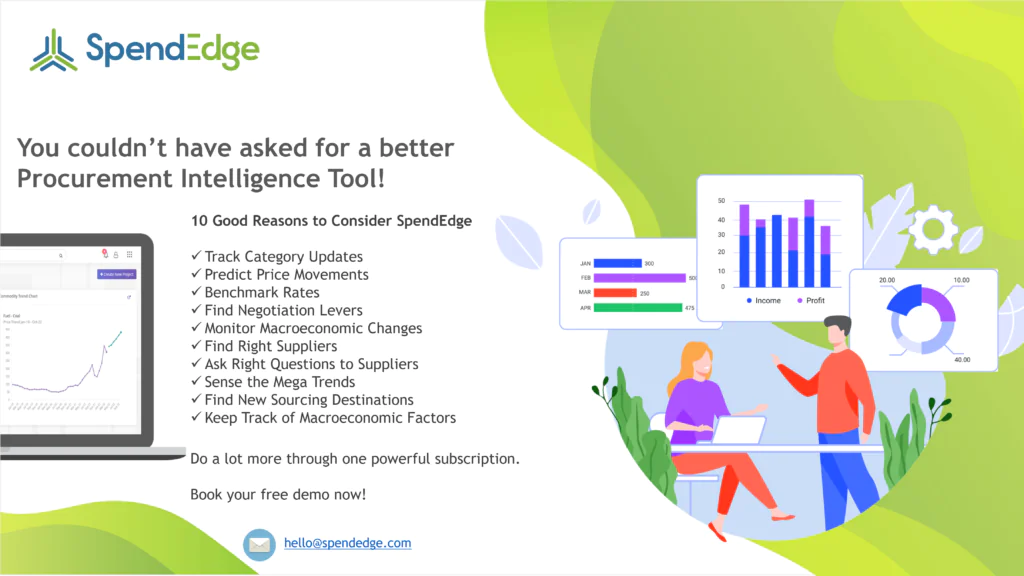By: Ankur Rishi
Procurement has ceased to be just another business function. It’s been more than a decade since procurement earned the more impressive status – that of a strategic function. Smoothing supplier relationships and making the sourcing organization as perfect as possible are the professed functions of strategic procurement services. The end goal is to achieve substantial cost reduction and curb bottom-line spend. Many a procurement service has fallen short of these expectations! There is a simple reason why the bright spots in the procurement firmament are not as many as we would have liked to see. In the first place, the expectations set for many procurement services are unrealistic and unattainable for resources already weighed down by a long tail of non-core activities. These key but routine-oriented tasks literally throttle resource bandwidths and, worse still, deprive “bread and butter” activities of the attention they really deserve. Help is here. Procurement as a service (PaaS) is the knight in shining armor that is coming to the rescue of distressed procurement services by balancing workloads and paring costs.
Boost ROI and productivity with procurement-as-a-service
No one in business has the luxury of an unlimited amount of time to do a piece of work. Everything is framed in time in today’s demanding and fast-paced world of business. The case is no different in the “procurement of services” domain since a cent saved here or minute saved there in sourcing, acquiring, and paying for goods is money or time earned! On the other hand, where procurement services commit more time or money to an activity than is warranted, it probably amounts to denying themselves the quality time that might have been better spent in alternative revenue-grossing activities. Spreading resources too thinly over critical areas like risk management and compliance simply because they are “otherwise occupied” or have “too much on their plate already” is a bigger risk for enterprises than is commonly thought. A resource crunch in procurement services will invariably give short shrift to supplier management processes. Extended procurement cycles, painful delays for customers, and cost escalations are just some of the most common fallouts of organizations paying insufficient attention to supplier deliverables. So, why are procurement services letting themselves be burdened with activities that are anything but revenue fetching? At the same time, control of procurement workflows that really matter to the bottom line might just be slipping out of their hands. So, offloading some of the procurement functions to a PaaS provider makes good sense. Because PaaS saves procurement services money and time, while helping mitigate staff burnout.
Take a different tack in supply-side risk mitigation – with PaaS
Since early 2020, businesses have been bearing the brunt of supply failures, and suppliers themselves aren’t always to blame for delivery breakdowns resulting from factors beyond their control (e.g., Covid-19, geopolitical conflicts, inflationary risks, cybersecurity risks). That said, with PaaS in place as an underprop, in many instances, procurement services could have recognized, avoided, and managed supplier threats early on before they start to snowball. PaaS providers assist chief procurement officers (CPOs) in developing risk prediction models and scores (high, medium, low) and, further, the approach makes resources accountable for proper risk management. Procurement services can lean on PaaS providers to track supplier performance against agreed benchmarks and activate alternate supply fulfillment paths as a priority in times of crises.
Innovate procurement with an exciting mix of new ideas
The procurement landscape is one that is in a state of flux, and best practices (procurement automation, integration, real-time insights-generation) and tools (RFQ automation software, contract and vendor management portals) to effectively negotiate this constantly changing terrain are also continuously evolving. Procurement services must replenish their best practices toolkit as well as adopt cutting-edge sourcing techniques in order to get better at what they are doing and get a good piece of the ball in this fast-paced game. PaaS opens access to an ever-expanding range of out-of-the box best practices, programs, and frameworks to energize the procurement function. Together, the PaaS provider and in-house teams can innovate procurement services by cross-pollinating ideas.

Contact us now to solve your procurement problems!
Author’s Details
Ankur Rishi
Vice President, Sourcing and Procurement Intelligence
With more than 12 years of advisory experience, Ankur manages platform content and services within the sourcing and procurement vertical. Over the years, Ankur has provided consulting services to category leaders from chemicals, energy, and packaging industry, on varied topics, such as category strategy, spend analysis, commodity pricing, and clean-sheet analysis.




